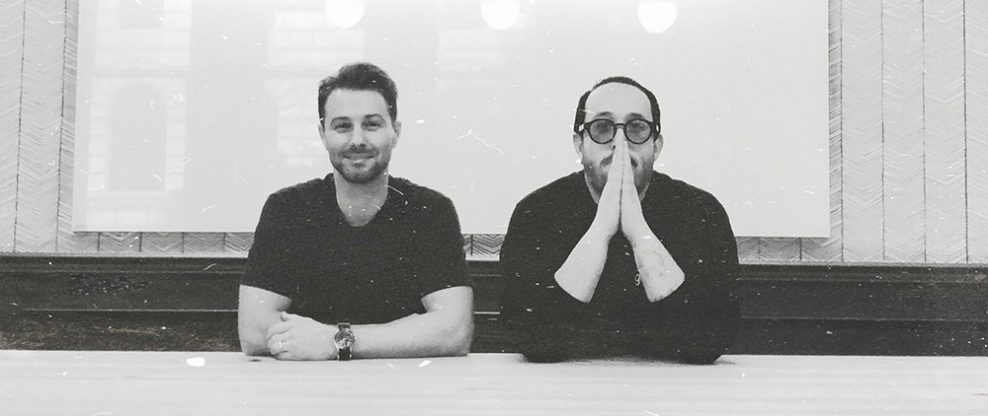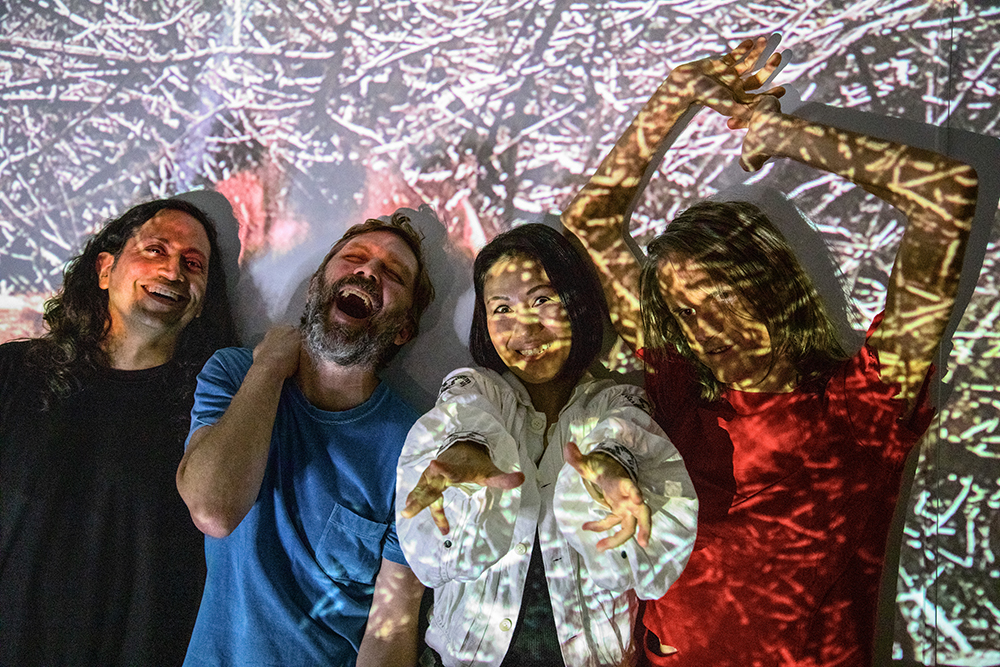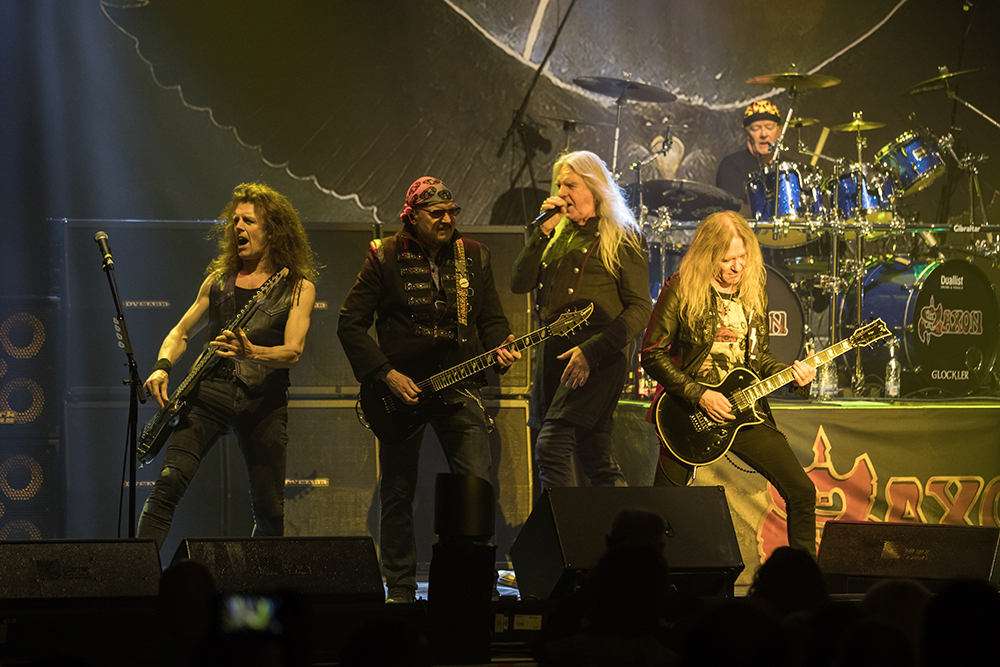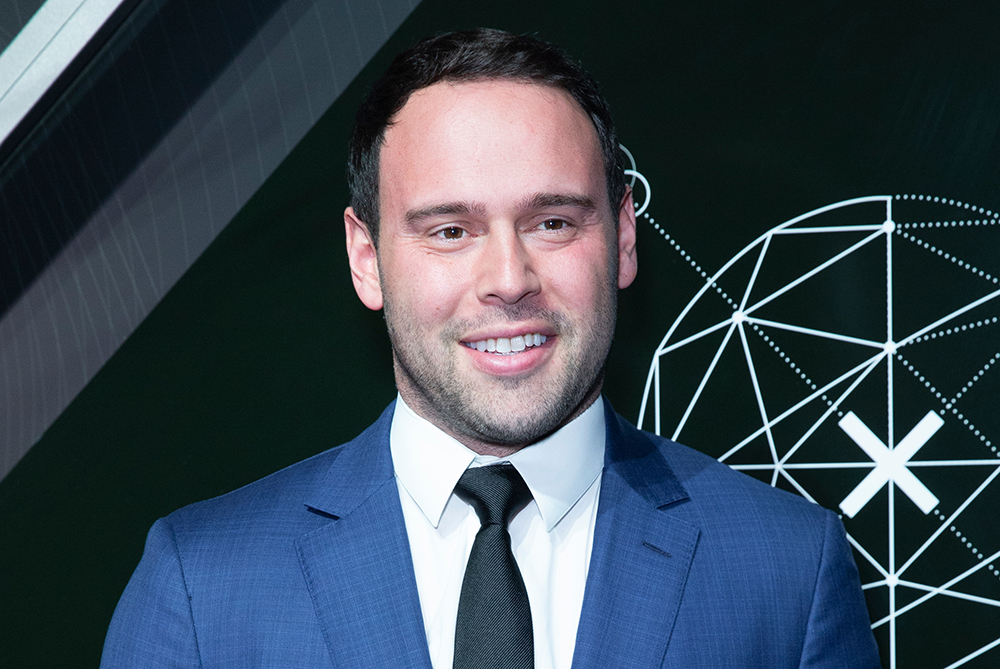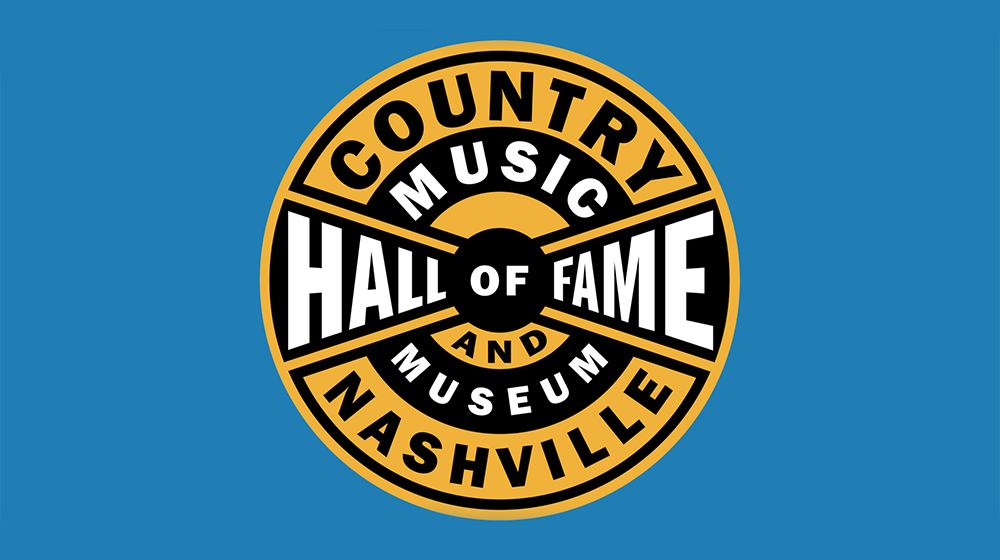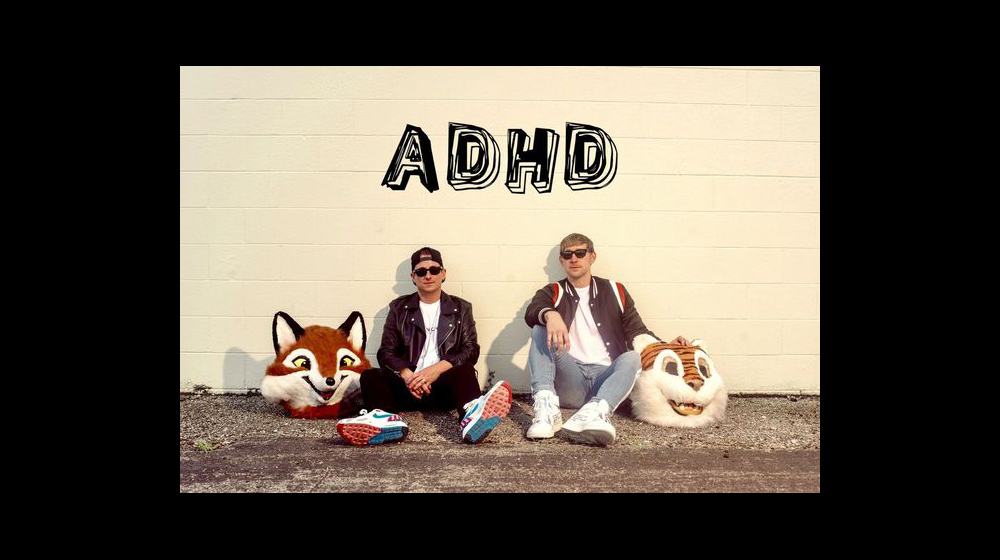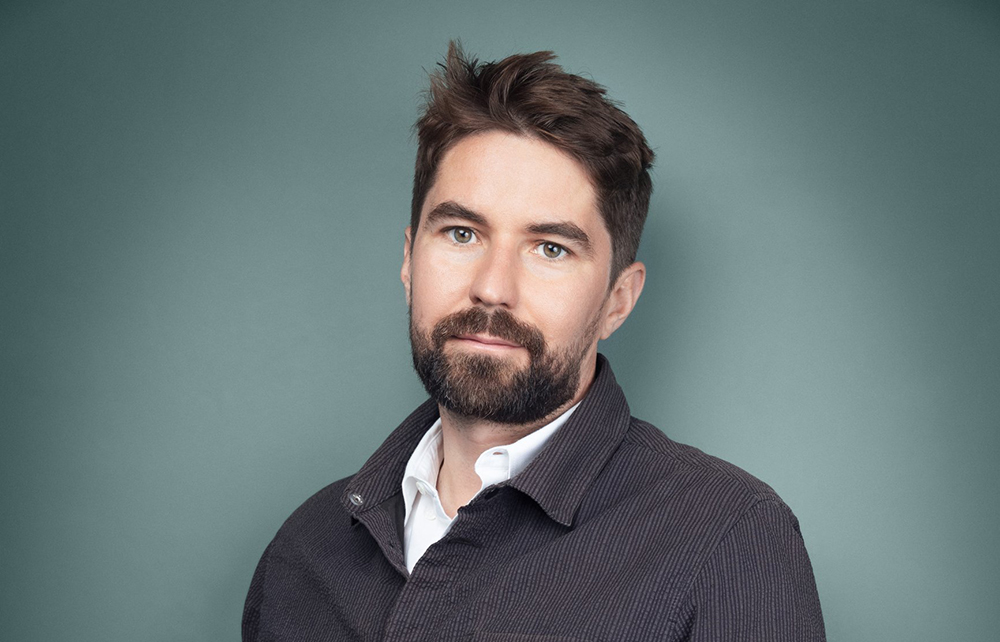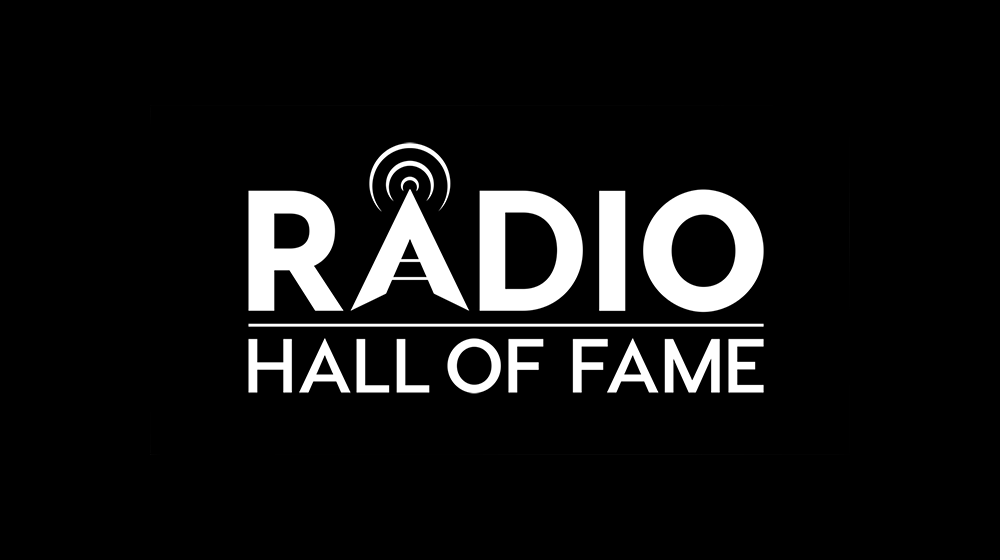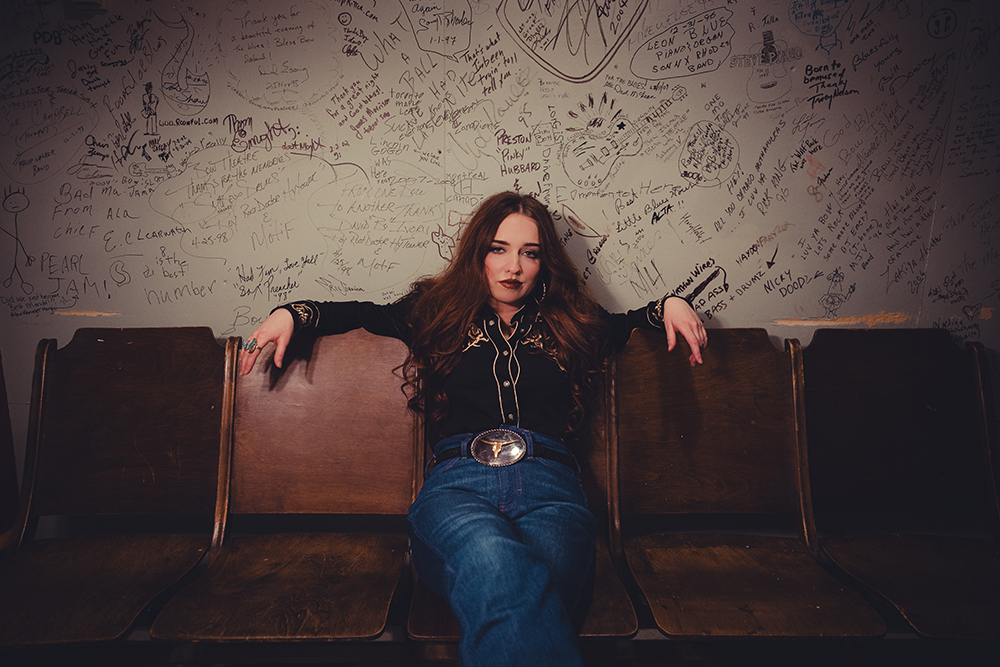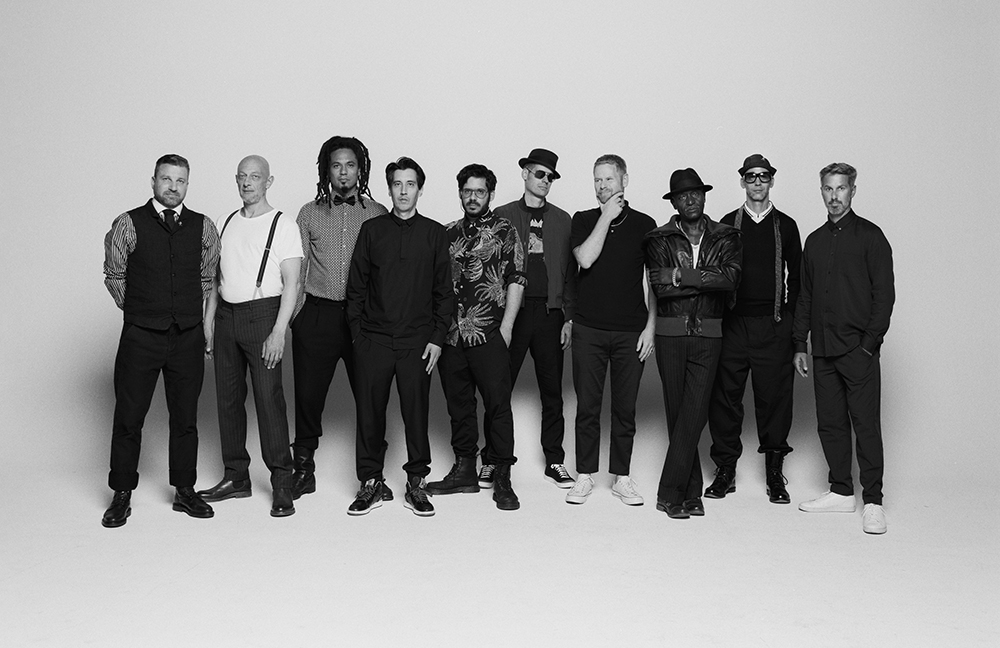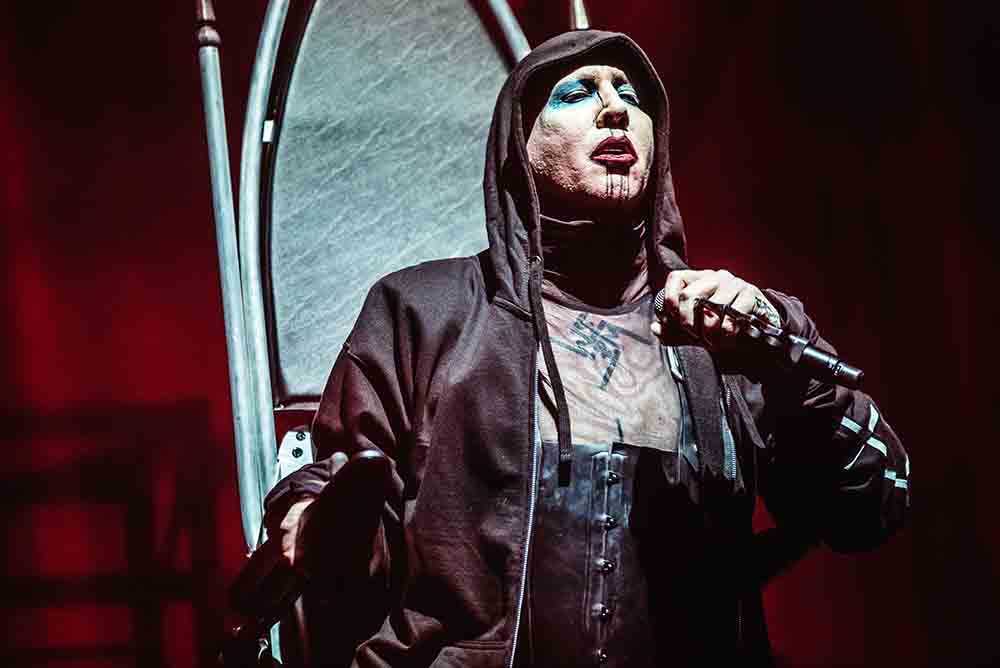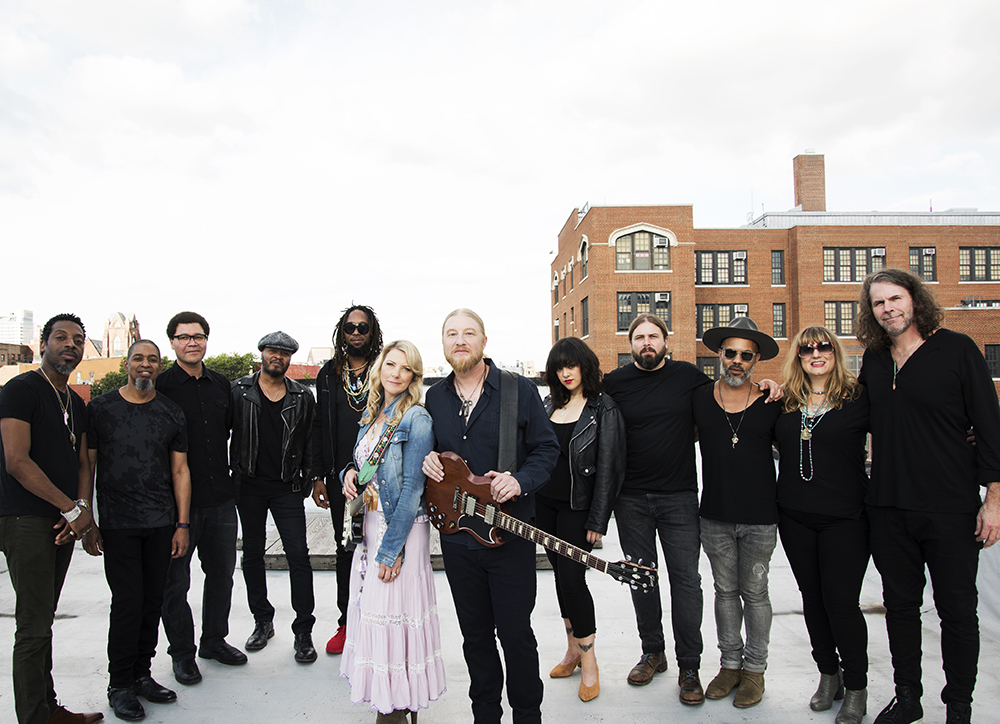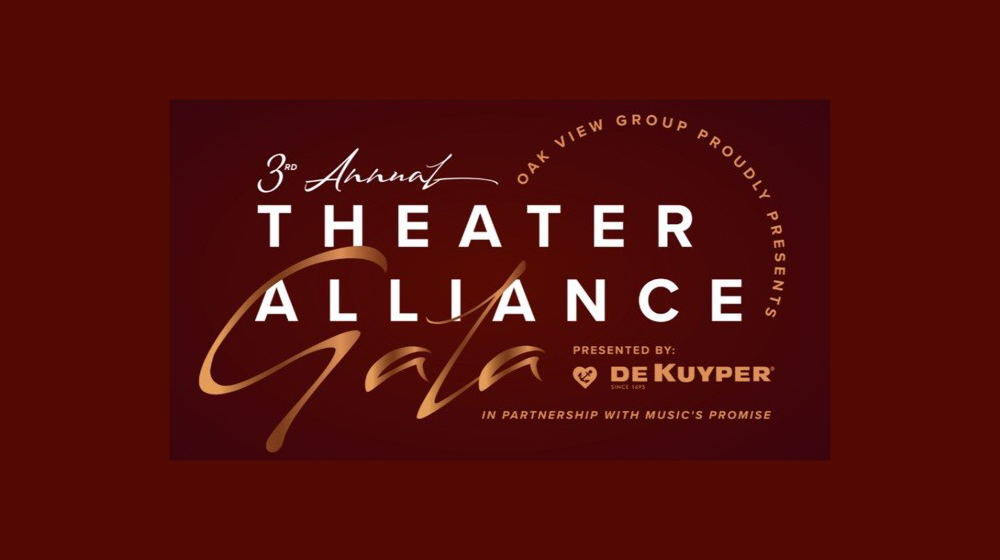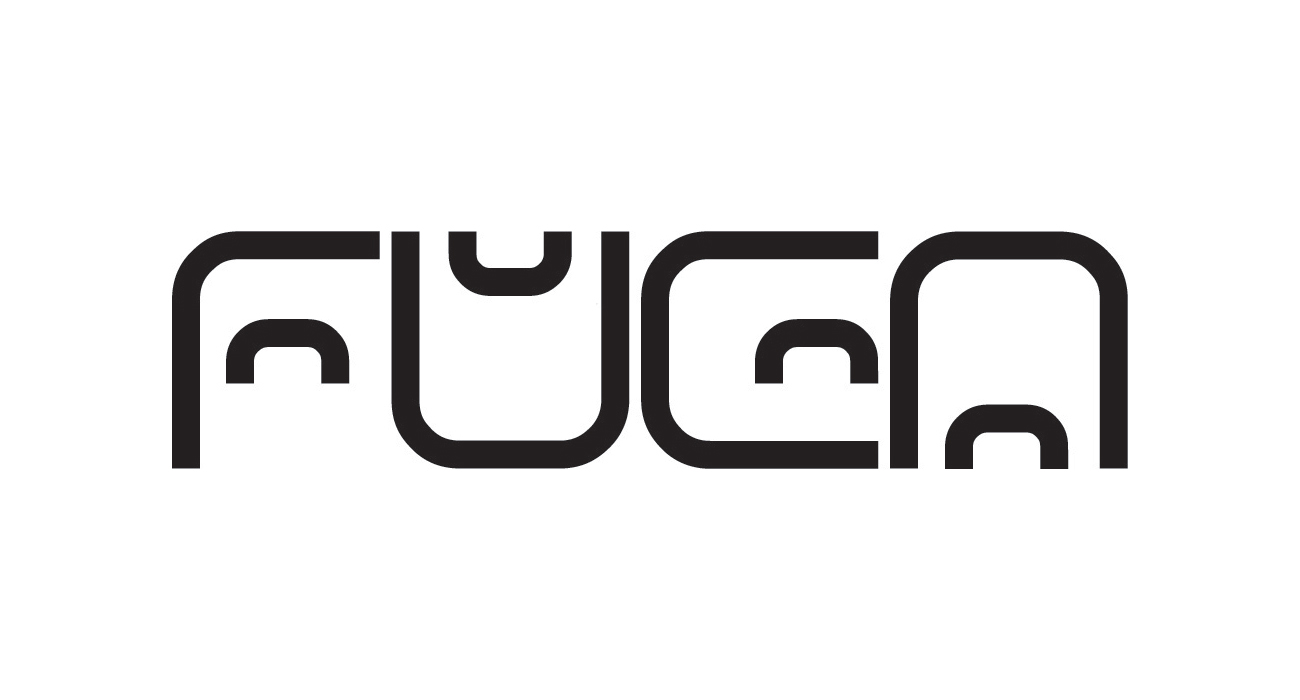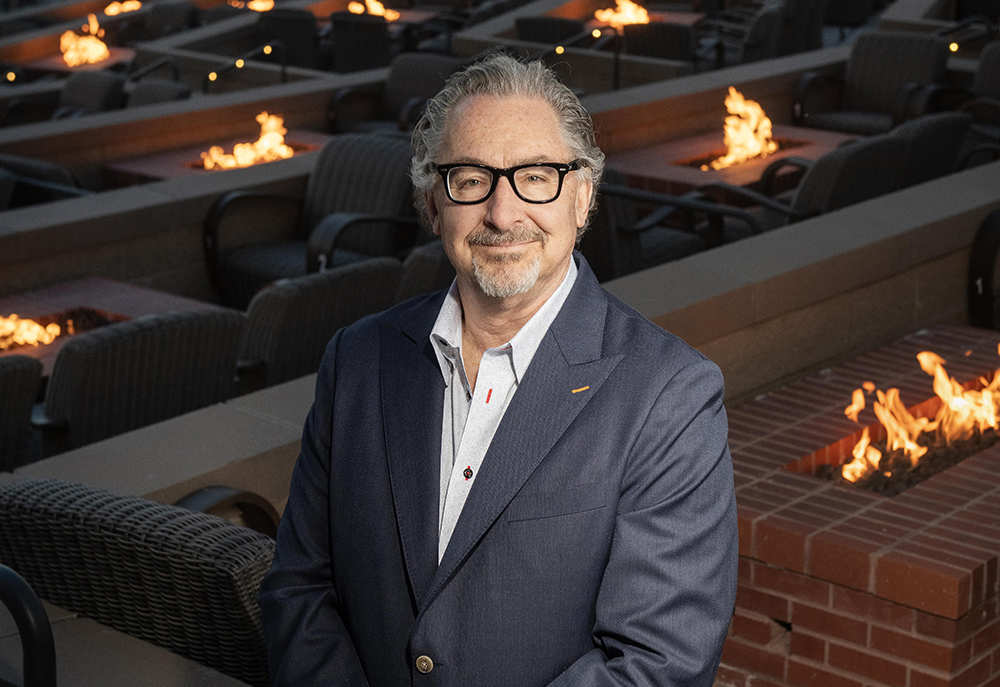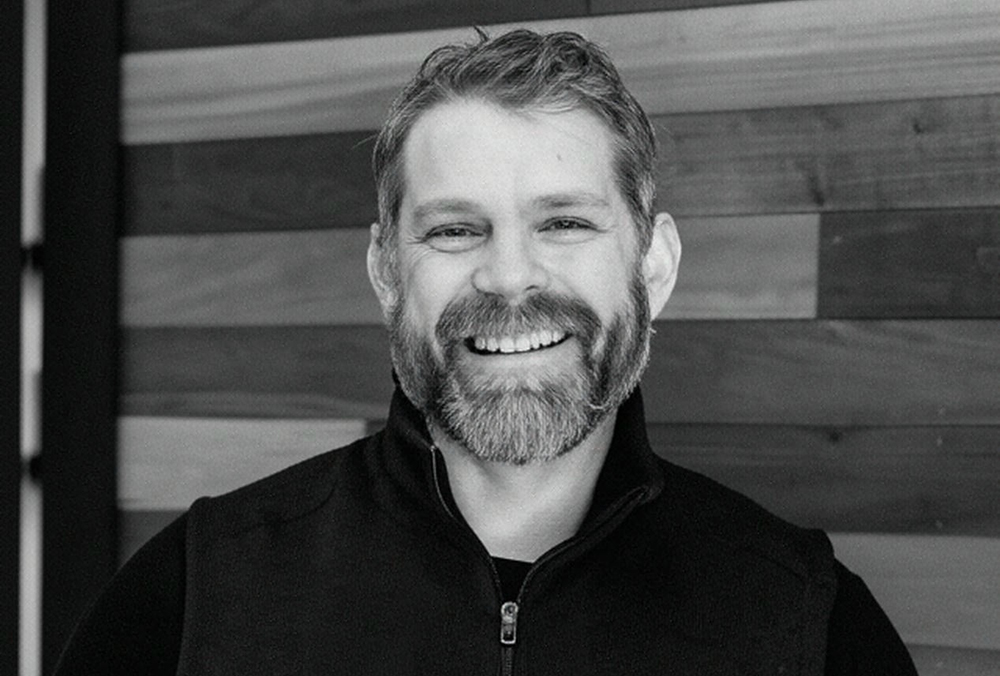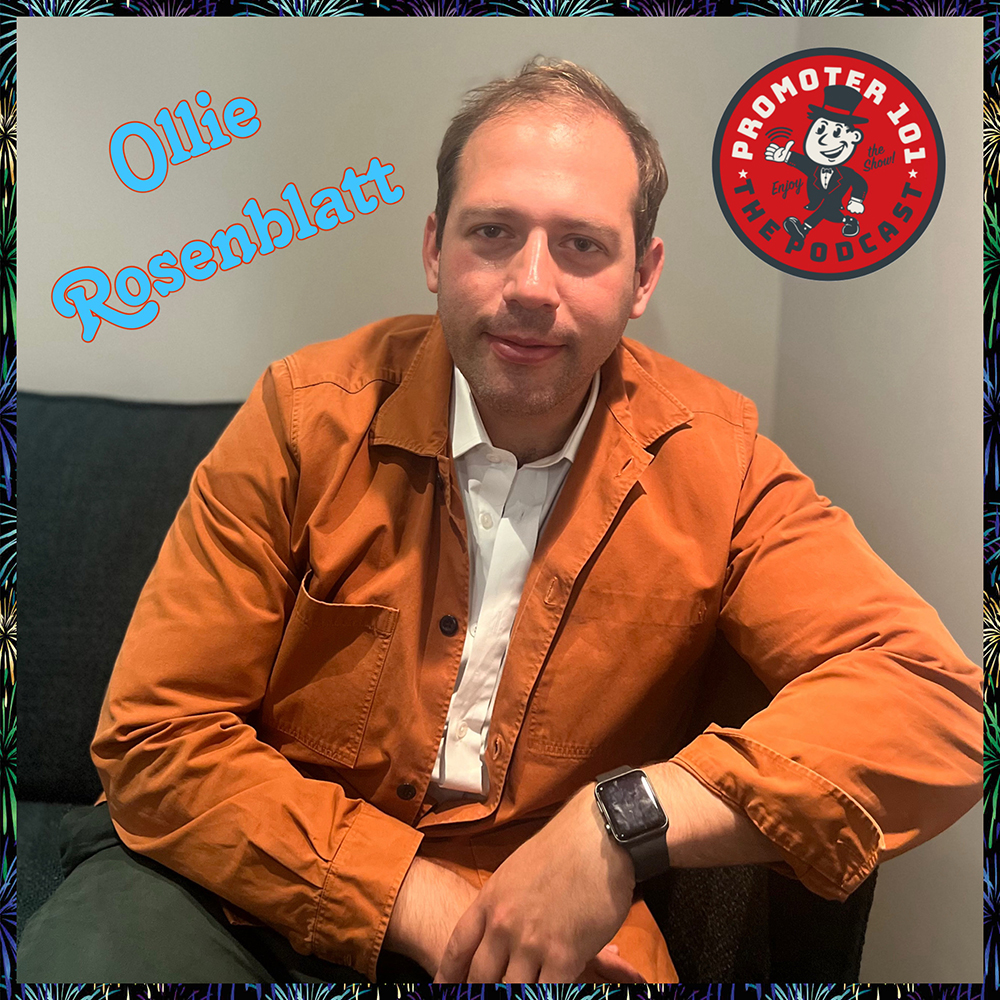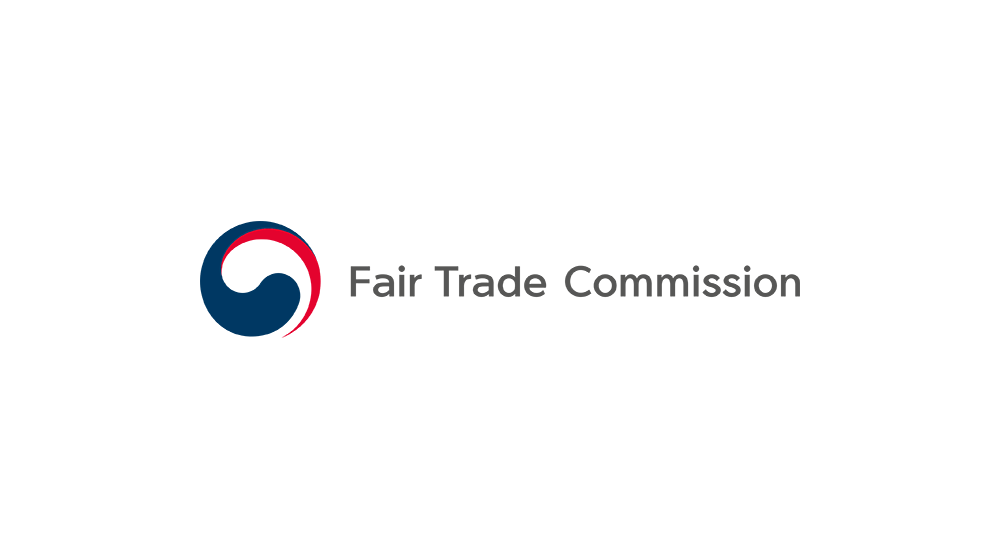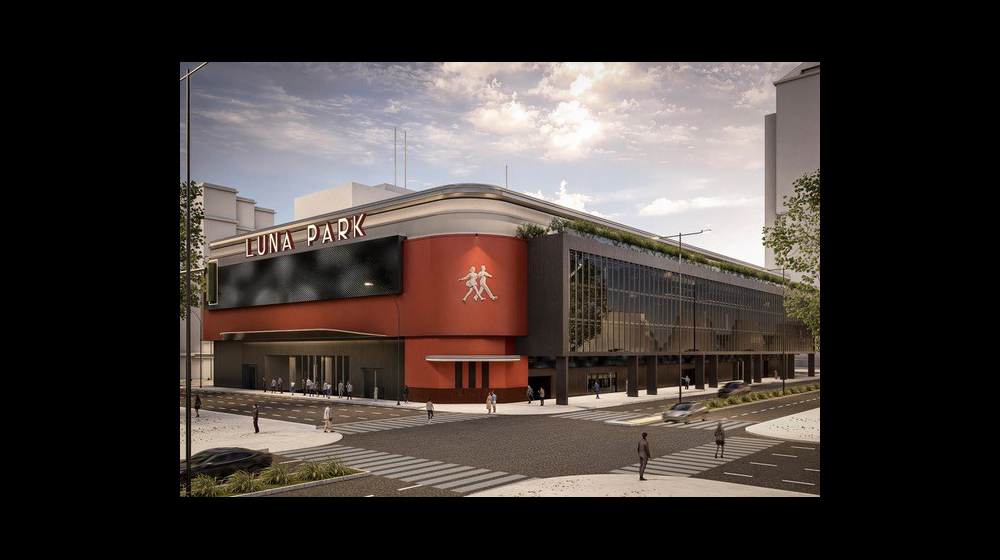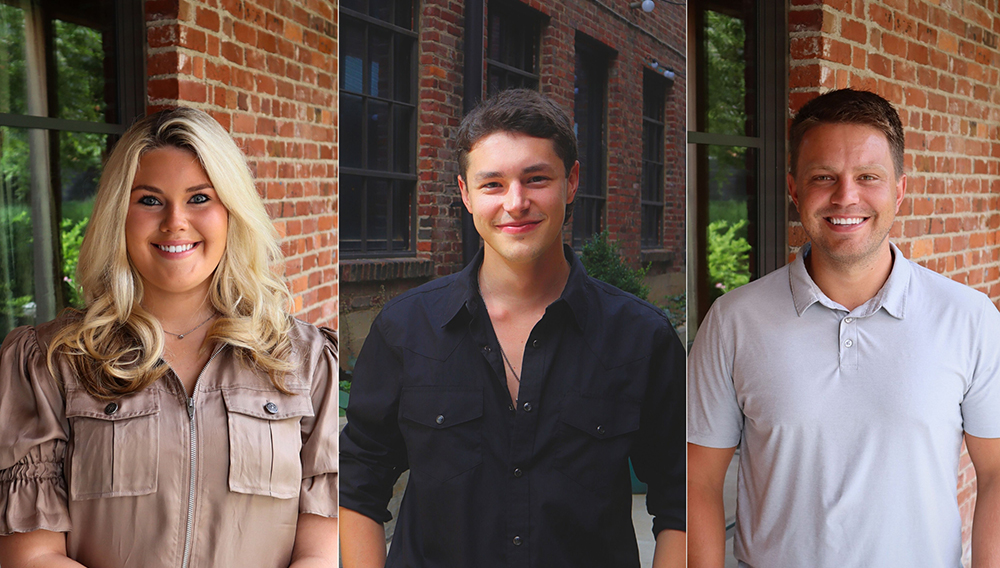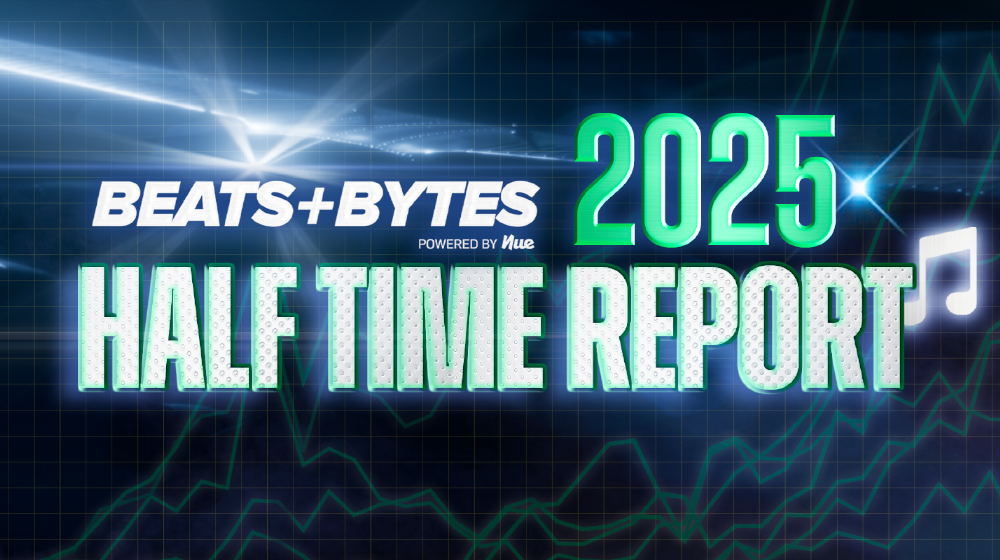This week In the Hot Seat with Larry LeBlanc: Jerad Anderson & Sebastian “Seb” Webber, co-founders/executive producers, Godless Studios.
Jerad Anderson and Seb Webber, two of the music industry’s staunchest advocates for serving the best interests of music artists, believe in the concept of partnerships between creativity and business.
As the recording industry increasingly realizes that its survival is not only about releasing music, streaming or posting social media updates—it’s also about creating compelling cultural moments by which fans can connect with an artist and with each other in real time–Anderson and Webber convincingly make the argument that video directors—specifically their video director clients—are creatively important throughout all stages of an album release.
Six-month-old Godless Studios is an off-shoot of Whitelist, a commercial production partner, and creative collective in downtown Los Angeles with clients that have included Google, Nike, Facebook, and The Walt Disney Company.
Home to video directors Spencer Creigh, Lance Drake, Lauren Dunn, Cameron Dutra, Pasqual Gutierrez, Mishka Kornai, John Merizalde, Anthony Pham, Joe Sill, Ryan Patrick, and Brooke Candy, Godless has already been utilized by such major acts as Muse, John Legend, Jack White, Kevin Gates, Cozz and others.
San Diego-native Anderson, the founder and executive producer of Whitelist, has had both feet planted in music and video for over a decade. From 2008 to 2012, he served as guitarist with the ultra-independent L.A. funk rock band, 100 Monkeys.
Previous to launching Whitelist in 2015, Anderson was head of product at Everdream, a digital content studio; and senior production coordinator at GreenLight Media and Marketing, a division of Red Light Management. Along the way, he worked as an actor; founded the tech startup Watchbox; and produced the 2010 film “Girlfriend.”
Webber’s job credits would take a very thick book to list. These are only the highlights: He started his career in the UK as the co-founder of the ticket app CrowdSurge in 2006. He was first an intern in London, and later VP of A&R at XL Recordings (2008-2012) in Los Angeles. Next, he served a three-year stint as senior talent manager at Red Light Management followed by an unsettling one year term as creative director for Tidal, the online music streaming platform.
Currently, Webber can be heard on the popular podcast, Neon Black.
From what I can see Godless Studios is fairly light in staff.
Jerad: Yeah, we are lean and mean. We have a very large network of freelance talent.
How many people work in the office?
Jerad: At any given moment there is at least 9 staff.
Seb: Nine full-time staff.
Jerad: Yeah, and our directors are in any iteration or group at any moment. Then there’s post-production also which is busy depending on projects. It really grows and swells, and then comes back down in-between projects.
You two met while working at Red Light Management?
Seb: Yeah, we did.
Seb, you went to Red Light in 2012 because of (COO) Bruce Eskowitz?
Seb: Hundred percent yes. I still talk to Bruce probably once a month. He’s still a mentor to me, and someone that I would literally kill for.
You stayed three years at Red Light. What did you learn?
Seb: The music industry is primarily full of shitheads in my experience. And there are a few shining lights that are genuinely kind, loving, and compassionate people; that want to help you; and, when they see something, they want to nurture you, and they are just compassionate on every level. Just incredible bosses. Bruce has been far the best person that I have ever worked for previous to this. Just being able to learn from him, and the respect that he gives you, and just the amount of runway that he gives you. Once you are in, you are trusted. He’s an incredibly genuine person. He was just a great person to work for. The trouble was management is just not for me.
Over the years you managed Giorgio Moroder, Leona Lewis, Steve Angello, Ferry Corsten, New World Punx, AN21, Max Vangeli, Deep Dish, Third Party, Qulinez, Markus Schulz, DJ Rusko, NASA, and Sam Spiegel. Are you doing any management now?
Seb: No I gave up my management career. It’s long gone.
Jerad: What we do is management.
Seb: Yeah, we kind of manage (video) directors in a strange way, but no I don’t think that I will ever manage a musician again.
Were you any good?
Seb: Yeah, I was excellent. The problem is that my whole life would crumble down doing that. You can’t function and do anything normal. It was just…ah…yeah, I was really good. I made a ton of money, but I would literally feel empty, useless, surprised, and dead with my life at 9 A.M. every single day.
Seb, the web-based app CrowSurge which you co-founded with Matt Jones in 2006, was sold to Leonard Blavatnik, the owner of the Warner Music Group, at a valuation of $30 million.
Seb: The valuation was $30 million. I didn’t have 100% of the company.
Over the years your share diminished as the company expanded, with the merger with Songkick in 2015; and with increased outside financing. As well, you also no longer had time for it. As a result, your share was smaller.
Seb: Yes. I didn’t make $30 million, but I didn’t come out badly at all.
Did you have any shares in the Tidal digital distribution platform where you were creative director for a year?
Seb: Mmmm. I am kind of in a disagreement with them over that. I am going to say no for now. You know Larry, 1% of nothing is still nothing.
What the hell happened with Tidal, which recently is the center of accusations of data manipulation?
Seb: What happened is they let a PR agency run with a PR idea without coming to any of the people (artists) that actually mattered. Hey, the messaging was “The rich want to get richer,” and it created the most terrible feeling that I’ve had. There’s a whole story behind it where I’m in New York. I come in for this thing (the launch) but I get food poisoning on the plane. I check into the hotel. I am puking. I am dying, right? I can’t make it to the launch. The launch is at 6 PM. At 5:45, I talked to Coran Capshaw and to Bruce (at Red Light Management), and I say, “Guys, thank you so much for the opportunity. I really have enjoyed my time at Red Light, but I’m really going to have to start scaling myself out. I’m part of something that is launching in 15 minutes.” They were like, “Cool. Thanks for your time,” and click. I watch the live stream (of the launch) from my hotel, and I just see this disaster unfolding. I just start crying and screaming at my laptop, “What the fuck has happened? What have I done?”
You have worked at a grassroots cool level for much of your career but on March 30th, 2015 you became part of one of the biggest fiascos in music industry history that took place at the Skylight at Moynihan Station with a press event like none other. On hand were Jay Z, Usher, Rihanna, Nicki Minaj, Madonna, Kanye West, Beyoncé, Jack White, Deadmau5, Daft Punk. Chris Martin and Calvin Harris being presented via a telecast. Tidal arguably is the “Ishtar” of the music industry.
Seb: You have no idea. Everything about that is a war zone.
Are you surprised by Tidal’s current problems?
Seb: No way. No way.
Jared, in 2015 you founded Godless Studios’ parent company, Whitelist. How did that come about?
Jerad: I was at a production company Everdream that had a new way of thinking about video. I saw how rigid the production company model was at the time while working on the agency side at GreenLight (Media & Marketing, a division of Red Light Management, founded in 2008 by Coran Capshaw, Dominic Sandifer, Bruce Flohr, Nick Davidge, and Steve Bender) and saw a better way with a more flexible, partnership-first approach. I had actually hired Everdream for a job that was lower budget, and I eventually went to Everdream. That was the place that I saw, “Okay things are different, and this is positioned to address that.” Unfortunately, Everdream fell apart, and when it fell apart, instead of looking for a job, I took a chance on trying to start something myself. Just taking everything that I had learned, and access to certain things that I had gained, and I was able to put it together and create this thing (Godless), and it ended up getting momentum. It’s the right time, and the right place to address the things that were needede.
It is being predicted that 2019 will be the year in which we will likely see a proliferation of live video streaming with music, content packages, and post media updates.
Seb: One hundred percent. I think that you are right in saying content packages, but I think that right now, it is just the package of anything. It is a huge component. We have definitely noticed the difference in requests for things like that, and we definitely see it from a volume perspective; where people just understand their needs a lot better now and understand that it has to be done.
From rappers like Drake, Danny Brown and T-Pain broadcasting live on Twitch to Ariana Grande exploding on YouTube with her “thank u, next” video, artists are starting to push against omnipresent passive consumption. Instead, there are increased conversations about content leading to artists and fans coming together. We are seeing boundaries being eliminated.
Seb: Yeah, it’s nuts.
(On Nov. 30th Ariana Grande racked up 829,000 viewers all at once on YouTube for her ‘thank u, next’ video, becoming the biggest release ever on YouTube’s Premiere feature. Also over 516,000 chat messages were registered during the premiere. In March 2018, Twitch broke its record for most-viewed streams by a single player when pro-gamer Tyler “Ninja” Blevins assembled a celebrity group to play Fortnite. Ninja was joined by NFL rookie JuJu Smith-Schuster, rapper Travis Scott, and Drake. At its peak, the stream hit 628,000 concurrent viewers.)
I’d argue that this evolution isn’t just coming from labels and artist management because we are also seeing Spotify and Apple and others ramping up their diversity of offerings, including ramping up podcast content and putting them in the foreground.
Seb: Oh yeah. The deals that are now being done on those are massive. Spotify is doing huge purchases. I have a podcast too (Neon Black with co-hosts Mike Catherwood, Ryan Jaso, and Cheyne Gilmore),and we’ve noticed even from a brand perspective that they are spending money a lot earlier on. From what I understand, it used to be if you have 20,000 weekly or monthly listeners—I don’t know which one—but 20,000 was kind of a starting base. But we have about 10,000 or 11,000, and we are starting to get advertising offers which is kinda cool. It just means that it is reaching a lot further. But, yeah, you are absolutely right it is really cool to see Spotify dive in head first into podcasts. Actually, they have become a real believer in it. It is something that they are taking really seriously which is interesting.
Having a current Neon Black podcast titled, “Trapped in R. Kelly’s Closet,” you are going to attract people.
Seb: (Laughing) Yeah.
Not to mention a previous episode that began by discussing what animal has the largest penis.
Seb: Yeah, exactly. It’s funny because we were just talking about that.
For nearly a decade, a gulf existed between the music and technology communities which has lessened as managers and artists began to gain greater control and ownership of careers as technology became more scalable. Many managers and artists now maintain technology should be about empowering and enabling artists; not owning them.
Up until recently, with Spotify, Apple, and Amazon, it’s really been about owning or controlling artists, and that is changing. For example, Spotify is now allowing independent acts to upload recordings; and Apple, which is now investing in original content, acquired the London-based artist discovery start-up Platoon that works primarily with musicians to distribute and sell their work. We will see even more music-related services coming onboard this year.
Seb: Right. One hundred percent.
One of today’s music industry buzz phrases is “having direct contact with fans.” Seb, when you and Matt launched CrowdSurge in 2006 that really was what it was all about: Ticket sales and distribution direct to fans. It eliminated the ticket agency in the selling of artist-controlled concert tickets. Yes, it was in response to Ticketmaster Entertainment, but more importantly, it gave access to fans.
Seb: Yeah, it’s funny because managers were starting email lists, and they were gathering email addresses. People knew there was a going to be value in it—mailing lists and stuff—but no one really knew how to monetize it. That is where it really started. You had bands like the Foo Fighters that would have these huge colossal mailing lists at the time, but really had nothing to mail about.
Many bands today have massive followings, but little content to fill their social media silo. That’s where video can be vital.
Seb: Totally true.
In the late ‘80s, while many North American acts were releasing albums in two and three-year cycles, UK acts would, in the interval after an album ran its course, issue a stream of EPs, B-sides, and special packages with live and unreleased tracks. We are sort of in that era today in which a band needs an overabundance of content to keep fans attentive.
Seb: Yeah.
Don’t you think with Spotify, Apple, and the other platforms breaking up the album into single tracks that the cycle of an album release has been lengthened? Music is being spread out over a long period of time today.
Seb: Yeah. I never thought of it like that. But yeah, that’s an accurate representation. Yeah. I think that the problem now is there’s just a lot more (music).
With a new video, what’s the first outlet or platform you head to?
Seb: Great question.
Or how do you suggest planning out a campaign? Where do you start?
Jerad: It is really different from starting out to high range.
Seb: For the bigger acts, the Muses and Coldplays of the world, where they are not relying on media partners or any of that stuff, it loads onto YouTube, that they post to, and that gathers enough (momentum). Really, the type of spend on the scale a lot of the time, it’s not really up to us wherever the label places it. “Complex Premiere is premiering this video” or whatever. I think that if you are a C (or) B type artist then you are still doing it (videos) with media partners. If you are a superstar then you just issue it to YouTube. We see a lot more launches on Instagram now.
Do you suggest alternative, scaled up or down, video concepts to clients?
Seb: Yeah, we prefer obviously to do the whole thing (campaign), but we would angle toward, “What kind of story are you telling? How much do you want us to do?” Help them build this ecosystem around the whole release. That’s really how we want to do it in the future. We are so lucky that we have a very diverse group of directors where, chances are, if they have an idea, there’s one of our directors that would be perfect for that. They are still artists, and they still have to come up with that initial spark, and that is usually where the marriage really works. If they come up with the spark, and if we figure out how to set it on fire, then we usually get really good results. Just kind of being involved, really, in the conversation, and really knowing what their goals are; and I think also being able to really talk their language, and knowing how to operate with what the time lines are; and all of the other things that you can‘t really do unless you have been in it in a strange way.
Jerad, you have been involved with music videos as a musician, and in building branded content. Have you seen the requirements shift for what is needed?
Jerad: Yeah, it’s all been democratized. In this day and age, even junior high kids are their own brand because they have the tools to be. When I was in the band it was a great lesson in…we were one of the first Internet famous bands. That was our vehicle. MySpace was dying. Twitter kicked in right as we were becoming popular, and Facebook took over, and those were our tools. We never signed a record deal because we had direct access to our fans. Our business was direct to our fans. So however creative we could get; not only coming up with music, but merchandise, and platforms to that end which we did. We developed a platform to sell our concerts and to stream them directly to our fans. That was an experience that is invaluable today because that set our mindset; knowing that anything is possible in a creative medium. You can get to your audience. Some of the platforms have evolved since, Instagram didn’t exist then. But the point being that Seb and I landed in video primarily because that is one of the main vehicles that still scratches those creative itches for us, and also involves the management of creative talent and the art of getting it seen.
Video is, perhaps, the most obvious medium to communicate music in that it fits with most everything else, particularly with communicating via online. The smartphone is akin to the transistor radio in the ’50 and ‘60s in that it allows audio and video content to be portable. We have a computer we can take anywhere.
Three years ago, while with a group of Western music industry executives visiting the Qalandia Refugee Camp on the main road between Ramallah and Jerusalem, we met a young teenager who had the latest model of android phone. Far superior to what anyone in our group had.
Jerad: Oh man, wow. That’s really cool. He’s now more powerful.
For several decades video was the ancillary add-on to an album. Labels said, “You need a video for MTV” in order to promote the album or the act. Then labels began to hold back on videos as budgets skyrocketed, and as the recording industry went into a downward spiral. However, with artists putting out music on two or four-year cycles, it was obvious that it was crazy not having a continued video presence. Today, an artist needs to be putting videos up continually.
Jerad: It’s true. That’s how they stay connected to people in constant contact. You take that into being able to create video on your phone, and you are in constant contact with your fans, and they feel more connected and closer to you.
Seb: It’s also a curse.
Jerad: It is a curse.
Seb: It’s way harder to stay relevant than it is to become relevant.
Jerad: Especially now with so much noise proliferating through the devices and other forms of the Internet
Seb: Which is why I think that we are having success at the moment is because we are able to help. It used to be that you would just put out three videos per album or whatever ever, a single. But now we have to come up with whole packages and a lot of the time people just don’t have the ideas, and the artists feel more stranded than ever, and I think that is where we fill this void to help figure out the story that they want to tell maybe across the whole campaign.
Jerad: As a creative partner.
Seb: As a creative partner, and it allows our directors to work with incredibly creative people, and musicians, and the like. Yeah, it is definitively not easy at least for the artist. They spend all this time on their album or whatever, and then suddenly, they are lumbered with figuring out the other stuff around it. A lot of time it’s a lot of hard work for them.
Jerad: The other thing is that there are so many types of videos. There is something that you shoot for free. There’s stuff you shoot for over a million dollars and sometimes they live in the same spot.
Seb: We have a production happening in L.A. today where we are having to get content for YouTube, Spotify, Apple Music and Primary Video in one day. We have to hit all of these platforms. They need to be filmed differently, and it’s not that easy to pull off.
Obviously, you try to attach one of your directors to the span of a release.
Seb: Yes.
You are trying to do what super-agent Michael Ovitz did at CAA in the ‘80s and ‘90s. He, of course, re-invented the role of the talent agency by controlling the entire film package. He bundled clients onto projects. If one of your clients likes one of your video directors, and hires them but needs an additional director, you have another director in-house that can be recommended.
Jerad: That’s exactly it.
Seb: It’s funny that you say that because Jerad and I both read that (memoir) book (“Who Is Michael Ovitz,” Penguin/Random House) last year, and it’s my favorite book of last year. You are right; packaging is power. Packaging talent. And it’s efficient. It really is.
So working with one of your video directors, a manager or artist might be able to say, “We want him for the span of this album. There will be four focus tracks, but we are going to be doing these other things. Probably we will be doing 10 to 12 different types of videos over the next two years. We want him to do them all.” That continuity does make sense. It allows artists to double or triple up on productions, which creates production efficiencies. This helps directors create more impactful content through a series of videos.
Seb: That is exactly the path that we are going down and we tested that last year with Lance Drake.
With Godless director Lance Drake, being commissioned for all of the focus tracks for Muse.
Seb: With Muse, exactly. It was cost efficient for them. It was creatively efficient for us. And frankly-speaking, we were able to get a lot more done.
Jerad: It sets the direction. A director can also become a creative director at that point, and they utilize the video assets, and the tour visuals. We did this with John Legend. We did this with (American violinist, dancer, performance artist, composer, and singer) Lindsey Stirling. We used to do all of Lindsey’s videos, and we ended up doing the tour visuals, and it (the visuals) became the artwork of the album because it is all cohesive. So it makes sense to keep that collaboration, almost like what we say is being a creative partner through the entire process.
The video was once, as I said, an ancillary attachment to the album. The label and management told artists, “You need a video.” The artist, while not actors, accepted that concept, and did, maybe, three videos per album; meanwhile spending time off the road and away from the studio. Today, artist and managers realize that to sustain a tour, to sustain a career, to get the maximum use of music tracks on digital platforms over a 24 month period, that artists must have a sustained visual aspect as well as releasing music.
Seb: Exactly, that’s outside of the scope for some artists because not all artists are born to be great at every aspect of their career on that scale of what you just mentioned. Staying relevant is a lot of work. A lot of work, and I think what has really been underestimated until recently is that all of these platforms are now relevant to certain audiences, and you just have to go, and get so much more just to scratch the surface; just to cover the basic which is where we come in.
For decades an artist performed and reached millions on “Top of the Pops” in the UK, or performed in the U.S. on “The Ed Sullivan Show,” and launched their careers. Later on, they appeared on “The Midnight Special,” “The Tonight Show,” “Saturday Night Live,” or “The Late Show With David Letterman,” and attracted millions of viewers. MTV made music video history and launched careers. Television’s impact is so hazy today, diminished with the proliferation of so many channels. It is impossible to reach that targeted mass audience anymore.
Seb: Right. Everyone is spread out.
Jerad: But what is interesting is more niché and then you get more dedicated niché followings like never before.
Decades earlier there were only a handful of music genres, and music fans knew instantly when there was a new release in their favored style. With so many subgenres today, there are artists quite popular in a subgenre but are not generally known outside the subgenre.
Seb: Right, yes. Hundred percent.
Success still has come about because many of these niché groups are media savvy, and are in direct contact with their audience. Or they are having to be media savvy.
Seb: They are having to be. Like you kind of didn’t have to be a personality before. Now you really have to be a personality. Of course, there are some exceptions to the rule. There always will be, but yeah, it’s harder. Maybe, it’s not harder. You just have to be a lot better.
After the heyday of MTV, which attracted top name film directors to music video, budgets plummeted as the recording industry underwent difficult times, being the first media sector to feel the full impact of the Internet, and technology-empowered consumers. After peaking in 1999, record companies were side-swiped by a technological revolution and a borderless global ecosystem that defied control or monetization. Video budgets have yet to bounce back; they remain modest or low. For several years, it was difficult making a living as a video director.
Jerad: It still is. For music video directors, unless you are in the upper echelon and you package. Even then, it is still difficult. It (video) has now become a place where it is an emerging filmmaker market or an established filmmaker market not for profit. It’s creative profit, and that’s purely what it has become for the most part, unless you come on and package and create, and direct multiple videos, and partner with an artist. It is not much of a business model other than for the love of the art and even so, the media is an erratically creative medium for music video and with budgets so thin it’s just as creative to figure out how you are going to execute any vision because there’s not the resources. Learning to become a politician to get people onboard is really learning how to do everything yourself. It is learning how to do post-production on your laptop through VFX (visual effects) in order to execute a vision that you need. There are some instances where there are budgets but generally, it’s been a race to the bottom, and it has stayed there. There is a movement amongst all music video directors right now trying to fight to get the budgets back because the labels have the money now.
Also, leading management companies and artists have money now because so many performers are working more and more on the road for better fees.
Seb: Yeah, and the managers have the power now.
Atlantic and Warner’s were the quickest out of the gate of the majors to grasp the power of social media and video alongside a handful of astute artist managers.
Seb: Oh yeah, absolutely. Warner’s and Atlantic. Atlantic who has been really ahead. I have an interesting perspective of the good ole days and these big budgets. I joined the music industry right when everything was turning to shit. Like when everybody was losing their jobs. It was like nuts. It was like there was no money. So there was never any money when I was beginning. It was also kind of cool because it set a level playing field where you could be in meetings, be in promo meetings, and the president of the company had no better ideas than the intern of the company. So I kind of feel that kind of flattened everybody out internally. But yeah, we have to be creative from the get-go. We have to figure out how to wear 20 hats at once, and creatively do something impressive always, but with no money. It is kind of that M.O. That definitely creates for us cultural currency, and we are really lucky that we can flip that into the commercial side when we have to.
If videos margins are so thin in directing videos how is Godless going to make money?
Jerad: Our goal with it is creative currency which then attracts marketers and advertisers who want that cool creative currency that is relevant and fresh. That’s where the business model comes in. It is almost that we make the art not for profit initially that attracts the people that want to pay you for that.
Seb: If you look at some of the most interesting brands on the planet Nike, Adidas, that level, they don’t look at other commercials for inspiration. They look a lot of the time at music videos. Music videos just travel a shit-load wider. They just cover a lot more eyeballs. Creatively, we find that our directors get a lot more work from that $5,000 Hell on Earth video shoot than they do from their previous commercial. So there is this kind of beautiful balance that works.
Presumably, Godless represents directors for videos and commercial work?
Seb: We do, yeah.
Whitelist has already worked with Google, Nike, Facebook, and Disney. So what are the differences between Whitelist and Godless?
Jerad: Whitelist functions differently in that its primary focus is branded content and commercials. What we found with Whitelist is that some of the music videos that we did do were fueling that. We also loved doing those things. We love being creative. That’s the core of what we do. So we figured, “Why don’t we create a specialty in music video–and of itself–that can also build a stronger culture; groom new talent, and also keep the talent that we do represent at Whitelist engaged and happy. So that’s why we broke it up separately.
Jared, you have a unique perspective being a musician, actor, film director. Being in a van with a band like 100 Monkeys…
Jerad: Yeah, it was the best of times, and it was the worst of times. It was “A Tale of Two Cities.”
(100 Monkeys—the name comes from the idea of the “hundredth monkey effect”– came together in 2008. Its debut album, “Monster De Lux,” was recorded in one take. Its 2nd album, “Creative Control Sessions” was produced by Scott Coslett. Its first studio album, “Grape” was released in 2009. In 2010, the band released the live album “Live And Kickin: Part One” along with the documentary “Live And Kickin: Part Too.” After the band signed with Los Angeles-based Warrior Records and Distribution in 2011, it released its 2nd studio album “Liquid Zoo.” In March 2012 Jackson Rathbone and Jared Anderson left the band. A month later, Rathbone’s lawyer informed remaining band members that the group name 100 Monkeys could longer be used by them.)
You left 100 Monkeys in 2012.
Jerad: Yeah, it actually fell apart. I don’t know how the narrative got twisted but the whole thing ended up coming unraveled in 2012 at Sundance when we were launching that platform Watchbox that we were distributing “Girlfriend,” and band content on. We were opening for Third Eye Blind, and we had to play that show down a person because he decided to leave. It was a mess. That was when everything started to unravel.
You are talking about Jackson Rathbone, who rose to fame with “The Twilight Saga” series after a stint on “Disney 411,” and who has had guest roles on such TV shows as “The O.C.,” “Close to Home” “No Ordinary Family,” and “Aim High,” and appeared in the 2010 film, “The Last Airbender?”
Jerad: Yeah.
Later, his lawyer informed remaining band members of 100 Monkeys that the band name couldn’t be used.
Jerad: Yeah, it was a mess (laughing). A typical mess.
(“Girlfriend,” starring Evan Sneider, which co-starred Anderson and Jackson Rathbone and scored by the band, premiered at the Toronto International Film Festival. “Girlfriend” was the first American feature film to star a man with Down syndrome.)
Have you put your musical career aside?
Jerad: Yeah, I do it for fun. I play music for fun now. As a hobby, and I enjoy it greatly. I have a piano and a guitar in my living room. I constantly noodle on those, but my really creative love is the creative business.
Meanwhile, at home, there is your wife working in an office, screenwriter Kristina Lauren Anderson who wrote “Catherine the Great,” the biopic of the Russian empress that topped the 2014 Black List.
Jerad: We were married all throughout the band. The band didn’t get popular until right after we tied the knot. So she didn’t know what she had signed up for. Luckily, we got married. Who knows if she’d be around after having to go on the road and deal with the madness.
The marriage might not have lasted.
Jerad:(Laughing) The relationship wouldn’t have probably, if we had not got married. But happily, that happened just in the nick of time. She ended up using that time on the road to do a lot of writing. She eventually became a successful screenwriter.
Seb, did you really pay someone to pretend to be you for three years (2003-2006) at the University of Westminster in order to complete your degree for the music business course, Commercial Music?
Seb: That is 100% true. She now works for SoundCloud which is really funny, and we’re friends. I would pay her a couple hundred bucks a week to pretend to be me. When I was doing my thesis—I didn’t write it, but I remember what it was on—I would meet her outside my lecturer’s office; who I was assigned when doing my thesis. I can’t remember his name, I wasn’t there often, and she would be like, “This is what you are writing about. This is what you’ve done. This is what you have changed around. This is what we are doing next.” I could memorize everything and walk in, and do it (the meeting) He had no idea. No clue.
You took the most Mickey Mouse of courses, Commercial Music. C’mon Commercial Music?
Seb: That’s right. It’s not even a real thing. My parents really wanted me to go to university. I didn’t want to go.
With a mother insisting you go to university so empathically, I have to ask. Are you Jewish?
Seb: Yes, exactly. I have a very Jewish mother. and a very Jewish grandmother. Both of them insisted.
As soon as I read that you didn’t want to disappoint your mother, I thought, “Aha, a London Jew.”
Seb: You nailed it on the head. That’s exactly it.
What did you learn working with Richard Russell at XL Recordings while enrolled at university? You started as an intern in the mailroom in 2004 mailing out Lemon Jelly, and Basement Jaxx records. You were promoted a year later to product manager, and later to VP of A&R, working with Adele, Basement Jaxx, M.I.A., Peaches, Radiohead, and the White Stripes.
What an extraordinary label Richard co-founded with Tim Palmer, and Nick Halkes in in 1989. With releases also by Radiohead, Tyler, the Creator, Vampire Weekend, Arca, Azealia Banks, King Krule, Nines and others.
Seb: Oh, wow. Richard is really great at signing the right people, and really teaching me to look at the entire picture. Just because an artist is really good in one field, they might not have all of the things that they need to make it. Also just the level of quality control. It was pretty amazing how nothing would be good enough, but it was magical when you would find that thing that would work. It was the best feeling. It was incredible. XL fronts (supports) one or two things a year. I still get PTSD (post traumatic stress disorder) from those A&R meetings that we would do on Mondays. It was do-or-die in those days. It was really hardcore. They were most stressful. Every week you had to prove to a group of music critics something new, and get everybody’s opinion. What we all knew really well was that the company wouldn’t sign anything unless everybody was on board, which is awesome. Now, they can do that because they had a couple of really good wins.
That sounds reminiscent of Motown’s 9 A.M. “quality control” meetings in which songwriters and producers–sometimes one and the same–would listen to each other’s tracks, and critique them. Then they’d vote. If the track received an A+ it would be released. Anything lower went in the vault. Anyone arriving after 9 A.M wouldn’t get in and had to wait until the next meeting.
Like with Motown, this type of environment at XL would have allowed you to work very closely with top management, and you would have learned how to work on some really big records. Quite an experience for a newbie.
Seb: Oh, it totally was. You could tell when somebody was on their way out of the company by how they did in the A&R meeting although that was never communicated like that. You know how you just get that feeling. It was just the worst feeling when you would be playing something, and Richard turns away. It would kill you. It was horrible. It was really grim.
You hung out as well as worked for several years as a DJ– doing FONO nights (For One Night Only)–on the club circuit in London, which has some of the grittiest clubs in the world.
Seb: Yeah but those were the places where all of the A&R guys would go and the bands played. I was at Klaxons’ first show. Mumford & Sons’ first show. Florence and the Machine’s first show. Adele’s first show. The Raconteurs’ first show. Yeah, there are a lot of shitholes in London. You’ve got to pay your dues.
You toured England with DJ Zane Lowe, one of UK’s most successful broadcasters who did a 12-year stint on BBC 1. Ed Sheeran and I spoke at the Songwriters Hall of Fame Gala two years about the grubby wonderfulness of playing clubs back home.
Seb: Oh yeah, they were grim. They were grim.
Where do you two intend on being in 18 months from now with Godless?
Jerad: In 18 months, we want to have some of the most popular videos circulating, and people knowing what Godless is as a household name in the music industry.
Seb: Really, for me, it’s getting in with the major acts early, and coming on as a partner for a whole campaign. Really coming in as kind of the conductor at the start of a campaign to the end; instead of with individual pieces along the way. We are starting to see that slowly happen.
Jerad: And building long-term relationships.
Seb: And building long-term relationships.
Larry LeBlanc is widely recognized as one of the leading music industry journalists in the world. Before joining CelebrityAccess in 2008 as senior editor, he was the Canadian bureau chief of Billboard from 1991-2007 and Canadian editor of Record World from 1970-80. He was also a co-founder of the late Canadian music trade, The Record.
He has been quoted on music industry issues in hundreds of publications including Time, Forbes, and the London Times. He is co-author of the book “Music From Far And Wide,” and a Lifetime Member of the Songwriters Hall of Fame.
He is the recipient of the 2013 Walt Grealis Special Achievement Award, recognizing individuals who have made an impact on the Canadian music industry.

